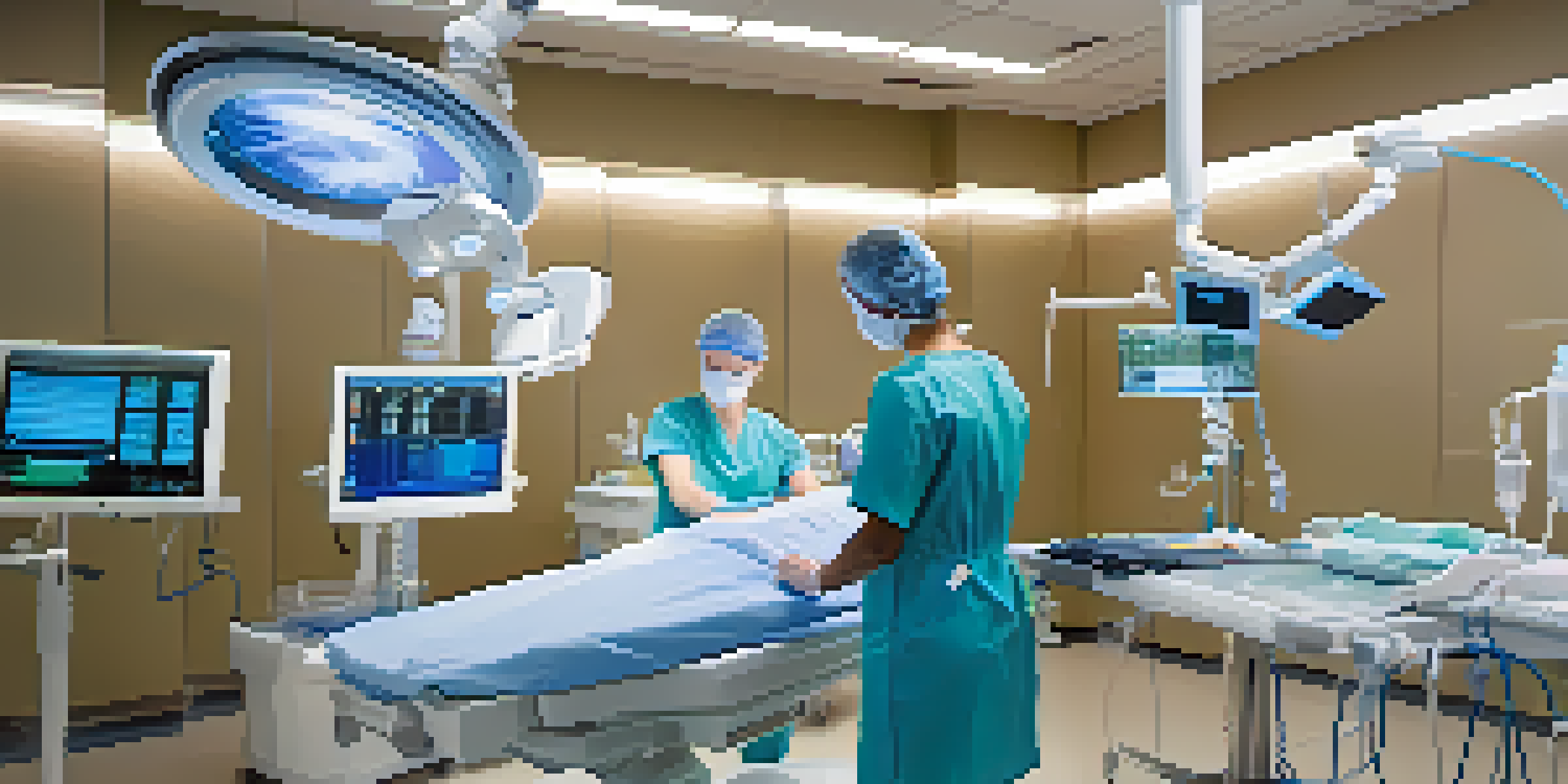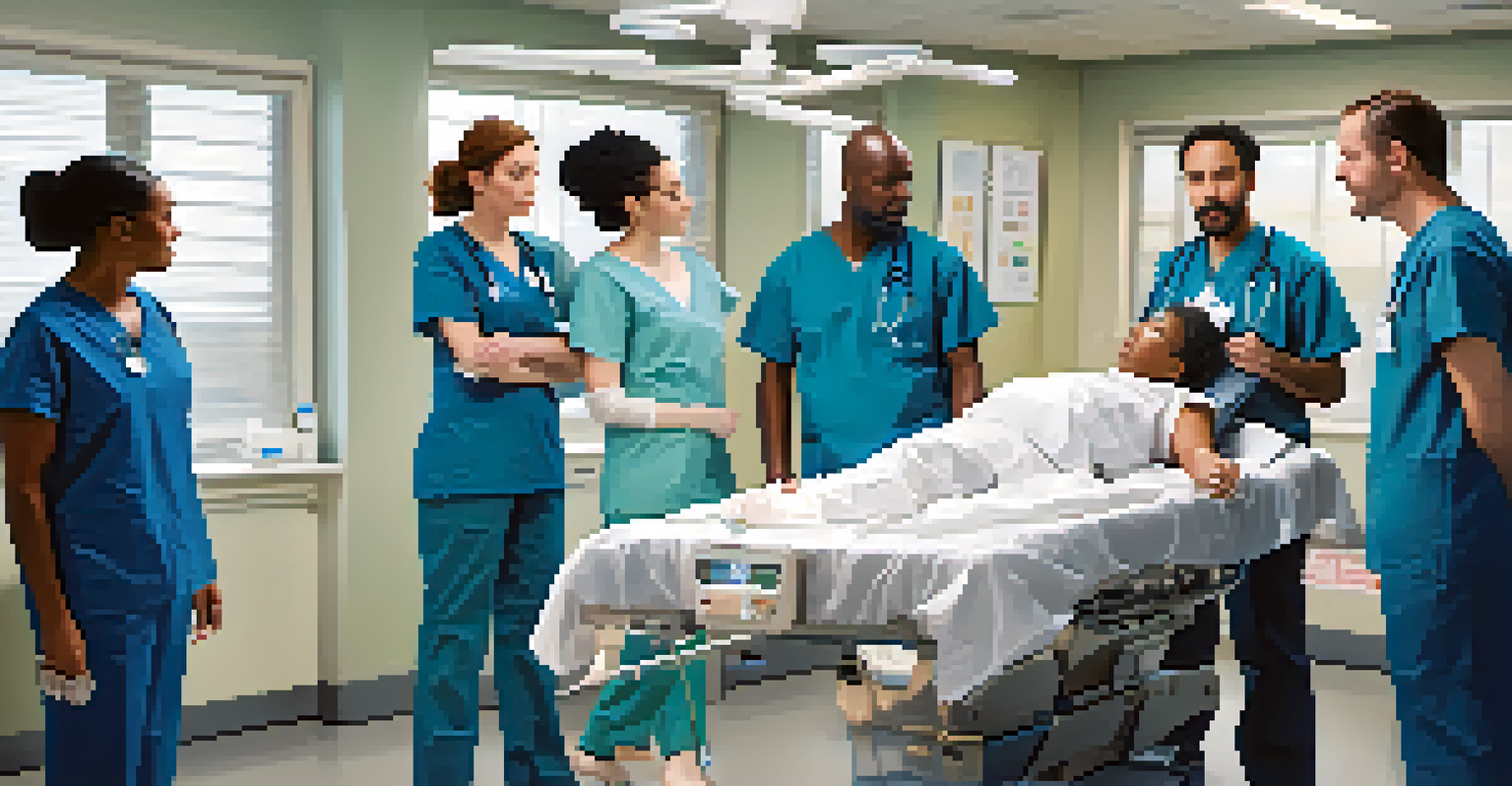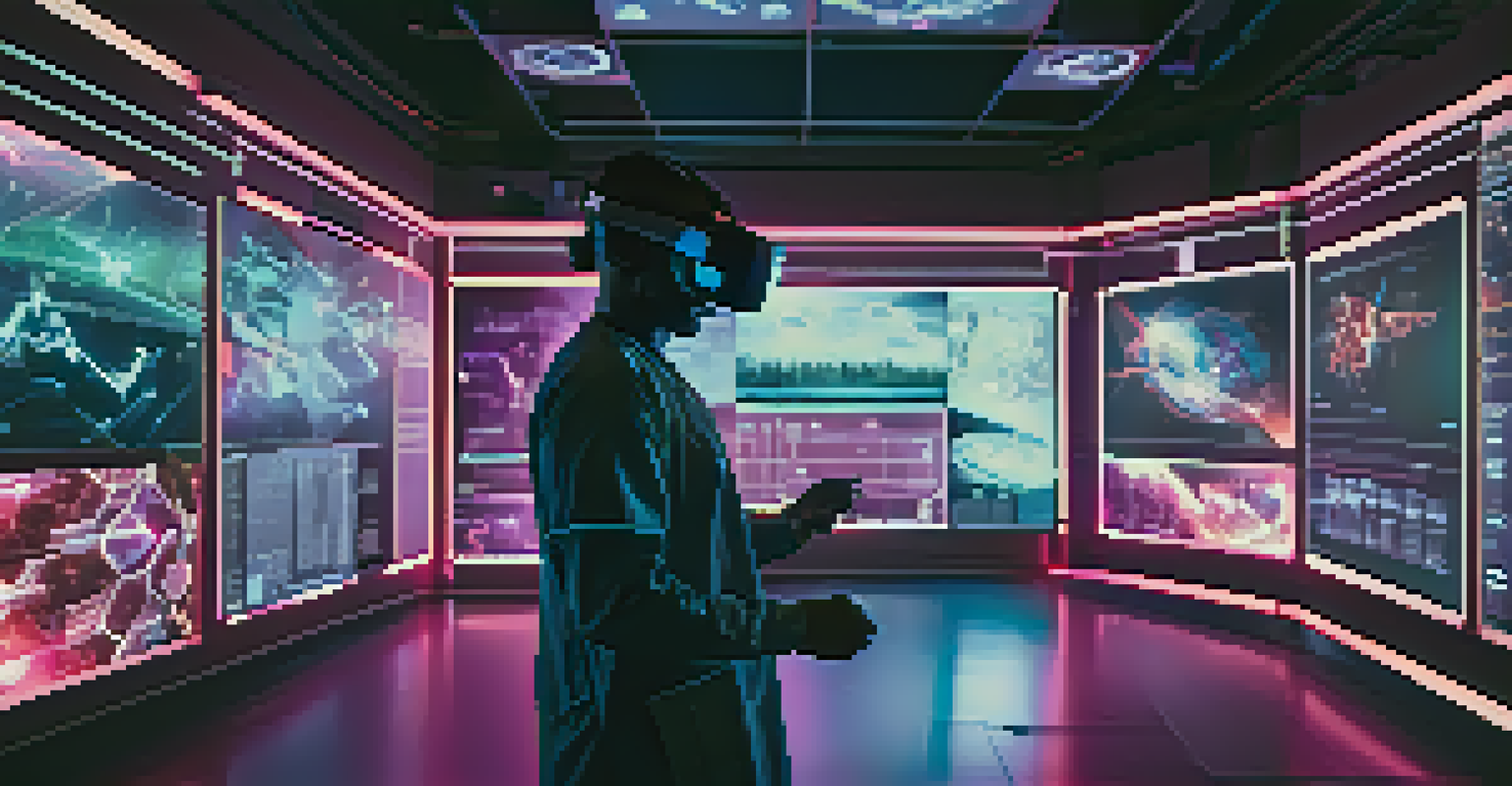Patient Safety and Medical Simulation: A Vital Connection

Understanding Patient Safety in Healthcare Settings
Patient safety is a fundamental aspect of healthcare that aims to prevent errors and harm to patients. It encompasses a wide range of practices and protocols designed to ensure that patients receive the highest standard of care. With a growing emphasis on patient-centered approaches, understanding the intricacies of patient safety is more vital than ever.
Patient safety is not just a priority, it is a fundamental aspect of healthcare that ensures every patient receives the best possible care.
Statistics show that medical errors are a leading cause of harm in healthcare environments, making it crucial for medical professionals to be well-trained. The implications of these errors can range from extended hospital stays to severe health complications, underscoring the importance of rigorous training and adherence to safety protocols. This is where medical simulation becomes a game-changer.
By focusing on patient safety, healthcare systems can foster an environment where patients feel secure and cared for. This commitment not only enhances the quality of care but also builds trust between patients and healthcare providers, leading to better health outcomes and patient satisfaction.
The Role of Medical Simulation in Training
Medical simulation is an innovative training method that allows healthcare professionals to practice real-life scenarios in a safe environment. By using advanced technologies like mannequins and virtual reality, simulations provide a realistic experience without risking patient safety. This hands-on approach equips trainees with the skills and confidence needed to handle critical situations.

Through simulation, healthcare providers can hone their clinical skills, decision-making abilities, and teamwork. For instance, a team of surgeons can practice a complex procedure together, learning to communicate effectively under pressure. This collaborative training not only improves individual competencies but also fosters a culture of safety and accountability.
Patient Safety is Crucial
Ensuring patient safety is essential in healthcare to prevent errors and harm, fostering trust and better outcomes.
Moreover, medical simulation can be tailored to address specific patient safety concerns, making it a versatile tool for education. By focusing on areas identified as high-risk, such as surgical procedures or emergency responses, training can be customized to enhance preparedness and minimize errors.
Enhancing Communication and Teamwork in Healthcare
Effective communication and teamwork are essential components of patient safety. Medical simulation provides a platform for healthcare teams to practice these skills in a controlled setting. By engaging in realistic scenarios, team members learn to communicate clearly and collaborate effectively, which is crucial when delivering patient care.
Simulation is a powerful tool to advance patient safety, enabling healthcare providers to practice and learn in a risk-free environment.
For example, simulations can replicate emergency situations where quick decision-making and coordinated efforts are required. Practicing these scenarios helps team members understand their roles and responsibilities, fostering a sense of unity and purpose. This is especially important in high-stakes environments like operating rooms or intensive care units, where every second counts.
Ultimately, improved communication and teamwork lead to better patient outcomes. When healthcare providers can work seamlessly together, they can reduce the likelihood of errors and enhance the overall quality of care, directly benefiting patient safety.
Identifying and Mitigating Risks Through Simulation
One of the significant advantages of medical simulation is its ability to identify and mitigate risks before they impact patient care. By simulating potential scenarios, healthcare teams can analyze weaknesses in their processes and develop strategies to address them. This proactive approach is essential for enhancing patient safety.
For instance, a hospital might conduct simulations focusing on medication administration errors. By identifying common pitfalls and testing new protocols in a safe environment, teams can implement more effective strategies that minimize risks. This kind of training not only enhances the skills of healthcare professionals but also creates a culture of continuous improvement.
Medical Simulation Enhances Training
Medical simulation provides a safe environment for healthcare professionals to practice critical skills and improve teamwork.
Through ongoing simulations, healthcare organizations can cultivate a mindset of vigilance and adaptability among their staff. This focus on risk management ensures that patient safety remains a top priority, even in the face of evolving healthcare challenges.
The Impact of Technology on Medical Simulation
Advancements in technology have transformed medical simulation, making it more realistic and effective. Cutting-edge tools, such as high-fidelity mannequins and augmented reality, allow for immersive training experiences that closely mimic real-life situations. This technological integration enhances the learning process and better prepares healthcare professionals for their roles.
For example, virtual reality simulations can immerse trainees in complex medical scenarios, providing them with a sense of presence that traditional training methods cannot match. This level of engagement allows learners to practice skills and decision-making in a way that feels authentic, increasing retention and confidence.
As technology continues to evolve, the potential for medical simulation to improve patient safety will expand. By leveraging these innovations, healthcare organizations can stay ahead of the curve, ensuring that their teams are equipped with the latest skills and knowledge to provide safe and effective care.
Case Studies: Success Stories in Patient Safety
Real-world examples illustrate the powerful impact of medical simulation on patient safety. Numerous healthcare facilities have reported significant improvements in outcomes after implementing simulation training programs. These success stories highlight the effectiveness of simulations in reducing errors and enhancing the overall quality of care.
For instance, a study conducted in a surgical unit revealed that teams who regularly engaged in simulation training experienced a marked decrease in surgical complications. By practicing procedures and honing their teamwork skills, these teams became more adept at handling high-pressure situations, leading to safer patient experiences.
Technology Boosts Simulation Effectiveness
Advancements in technology, like virtual reality, enhance medical simulation training, making it more immersive and impactful.
These case studies serve as compelling evidence for the value of integrating medical simulation into healthcare education. They not only inspire other facilities to adopt similar practices but also reinforce the importance of prioritizing patient safety in all training endeavors.
The Future of Patient Safety and Medical Simulation
As the healthcare landscape continues to evolve, the connection between patient safety and medical simulation will become even more vital. The increasing complexity of patient care demands innovative training solutions that can adapt to new challenges and technologies. Medical simulation stands at the forefront of this evolution, ready to meet the needs of healthcare providers.
Looking ahead, we can expect to see more widespread adoption of simulation training across various specialties and settings. As organizations recognize the benefits of this approach, investment in simulation technology and programs will likely increase, further enhancing patient safety initiatives.

Ultimately, the future of patient safety hinges on our ability to learn from past experiences and embrace innovative training methods like medical simulation. By prioritizing this connection, we can create healthcare environments where patient safety is not just a goal but a reality.